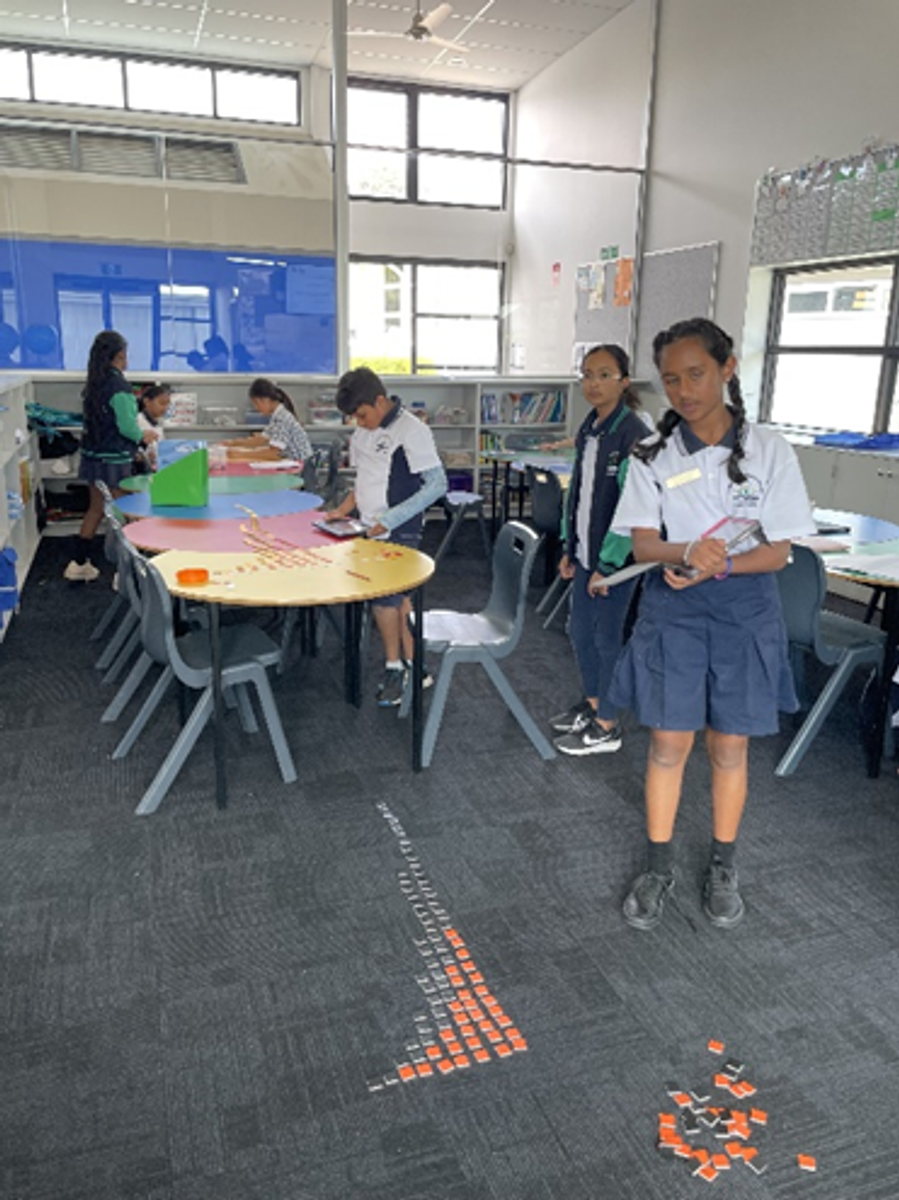Mathematics
By Mr Kaine Jenkins and Ms Kathy Williams

Mathematics
By Mr Kaine Jenkins and Ms Kathy Williams
| Level 2 – Mr Kaine Jenkins |
In Year 2 Maths Innovation, learners are developing an understanding of the traits that make an innovative learner - Courageous, Determined, Reflective, Collaborative and Visionary. They will work towards putting these traits into practise to develop an ingrained innovators mindset. Learners have identified patterns and multiplication as particular areas of interest for this term. They will be focusing on solving problems by identifying and utilising a range of strategies appropriate to each problem. Learners will work towards breaking down or understanding worded problems using the ‘CUBES’ and ‘RUCSAC’ strategies and will participate in ‘Maths Talks’ to compare and contrast their thinking with other students. They will also be encouraged to take notes and record their thinking in maths books to show evidence of their learning and to help recognise that making mistakes is a positive step towards progress.
|
| Level 3 – Ms Kathy Williams |
In Year 3 Mathematics Innovation, students will be working on a variety of strategies to solve worded problems. They will be using techniques such as CUBES or RUCSAC to discover what the important information is and what the question is asking. They will be taking part in the Maths Explorer Competiton which is designed to provide challenge by solving multi- step worded problems collaboratively. It provides opportunities to practice Problem Solving and Reasoning using a range of strategies. Additionally, students will explore numbers Prime Numbers less than 100. They will also explore the prime factors of composite numbers. As students explore square numbers, they will investigate patterns evident in the sequence of these numbers. The learning this term will be framed around developing the traits of amazing innovators, being Courageous, Determined, Reflective, Collaborative and Visionary.
|
| Level 4- Ms Kathy Williams |
In Year 4 Maths Innovation, students will be working on their goals to develop the important traits of an innovator: Courageous, Determined, Reflective, Collaborative and Visionary. They will be exploring how to solve complex worded problems as the participate in the Maths Games. During lessons they will be applying strategies of ‘CUBES’ and ‘RUCSAC’ to support them to understand the important information, what the question is asking them to do and to check that their answer is reasonable. Students will also be investigating and using the Divisibility Rules up to ten. Last term students estimated the number of steps they would take to get to Maths Innovation from their classroom. This term, they will analyse the whole class data to determine the Mean, Median and Mode before comparing this to their own data. As students explore features of numbers, they will evaluate the factors of numbers and apply the divisibility rules for numbers up to ten.
|
| Level 5- Ms Kathy Williams |
As students in Year 5 Maths Innovation, embark on their learning this term, they will continue to explore and apply the traits that successful innovators employ. In particular, they will focus on being Courageous, Determined, Reflective, Collaborative and Visionary. In connection with their inquiry this term, students will be considering how mathematics can be used to evaluate and explore aspects of the environment. They will be estimating the number of leaves on a tree, the surface area of a leaf and therefore the total surface area of the leaves. They will also estimate the number of breaths they take per day and the amount of Oxygen required for this to occur. They can also consider how much Oxygen one tree contributes to the atmosphere. Additionally, students will explore location, shape and location knowledge through investigation of patterns called ‘Spiorolaterals’ which allows them to use location, shape and angle knowledge.
|
| Level 6- Ms Kathy Williams |
| In Year 6 Maths Innovation, students will be exploring Pythagoras’ Theorem, investigating the history, completing some proofs, and using the relationship to solve equations. They will also be using this and circle relationships to investigate the area of two-dimensional shapes and the volume of three-dimensional shapes. Students will measure the school water tank and use these values to determine its volume. As part of this learning, they will be paying particular ttention the units that can be used to measure volume (cm3, m3 and L) and visualising how big one of each unit is. Threaded through all our learning, students will be enhancing the important traits of an innovator: Courageous, Determined, Reflective, Collaborative and Visionary. |





















